People often wonder how people come to populate an area and how it develops. In Somerset County, the first settlers came for the fertile land from Scotland and the Netherlands. But then something happened. Mining speculators started appearing on Bernardsville Mountain during the American Revolution and the landscape changed. The Mr. Local History Project looks back at what changed the mountain and surrounding area forever.
As with all Mr. Local History retrospectives, we often update the post when we learn stories and are sent photos from our internet community. We will continue to grow this piece as information becomes available.
Mr Local History Project
The Story Starts with a Bishop on the Mountain
In the book This is Bernardsville, Bishop Janes is recognized as the first to come to what later became known as “the mountain colony.” Bishop Janes built a lovely summer home in what was referred to as “the country” in Bernards Township. (Bernardsville was part of Bernards Township until March 6, 1924).
In the spring of 1849, after holding his Conferences, the Bishop settled his family for the summer and autumn at Mount Wesley cottage, near Mendham, New Jersey. The air of this hilly region was very favorable to the health of Mrs. Janes and the children.” Mount Wesley was later acquired by Francis Oliver in 1870, who turned the white framed home into a summer boarding house, introducing the area to guests George B. Post and George Seney. Seney acquired the boarding house and changed the name to Highland House. He expanded the house into what became the Somerset Inn in 1877.
Rev. William Day, the young pastor of the Bernardsville and Basking Ridge charge.
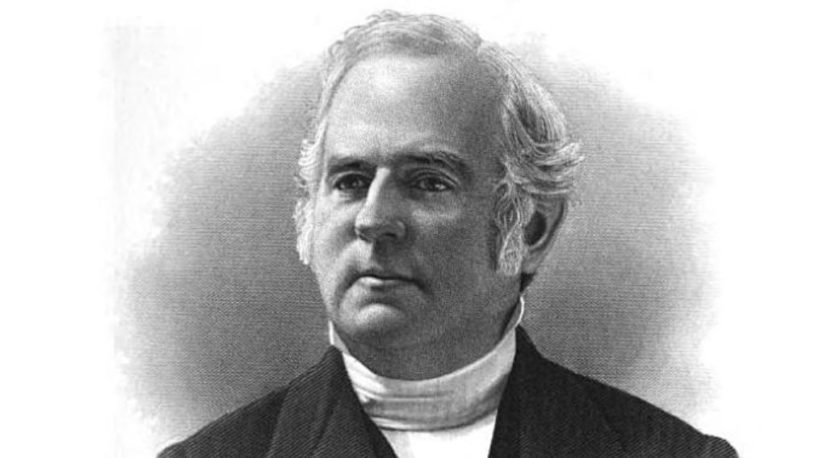
Bishop Edmund S. James
Bishop Janes purchased the Bernardsville home on Mendham Road in Bernardsville, knowing there was a lot of work to do in the area. in 1851, he started building churches in Orange and Irvington, Bound Brook, Johnsonburg, and Basking Ridge. In 1854 he paid for the entire Methodist church in Bedminster.
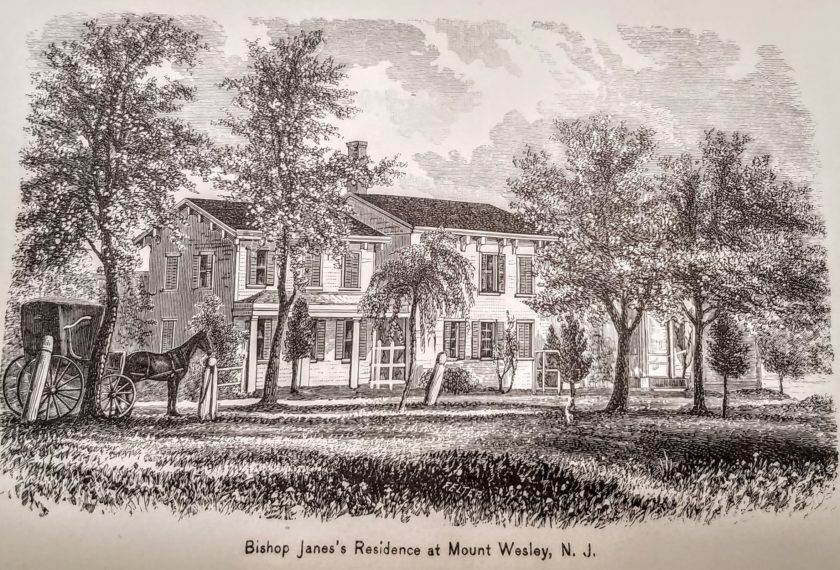
Francis Oliver’s BnB
Bishop Janes sold his home on the mountain in 1870 to Francis Oliver, who turned the home into an Air BnB-like summer boarding house where New Yorkers would come via the 5 o’clock train known as the “Millionaires Express” to enjoy the cooler summer atmosphere and country living. Some of his early guests around 1870 included George Ingram Seney and the architect George Post, who would later build beautiful estates on the Bernardsville mountain. Seney liked the area so much, that he made Francis Oliver an offer he couldn’t refuse and purchased the place.
Oliver’s boarding house quickly became a destination for the wealthy, on par with Newport, Rhode Island enclaves. Seney decided it was time to move permanently to the mountain and acquired the Hampton House boarding house from Francis Oliver in 1871, feeling the home and area could be developed and attract even more visitors to the Bernardsville area. He called his new acquisition the Highland House and began to expand the house the property that ultimately became a luxurious destination hotel. The Highland House would later become the prestigious Somerset Inn. Over time, the Inn grounds would cover over 850 acres.
George Ingraham Seney’s Vision
George Ingraham Seney (1826-1893) was born on May 12, 1826, at Astoria (later part of the borough of Queens, New York City, New York, United States), the only son of a Methodist minister Robert and Jane A. (Ingraham) Seney. His grandfather was Joshua Seney, a member of the Continental Congress and of the first Congress under the Constitution, and his grandmother was the daughter of James Nicholson of the Revolutionary Navy. Seney married Phoebe A. Mosier in 1849 and fathered ten children. George rose to the President of the Metropolitan Bank of New York. As president of the Metropolitan Bank (New York City), Seney became a financier of newly chartered railroads.
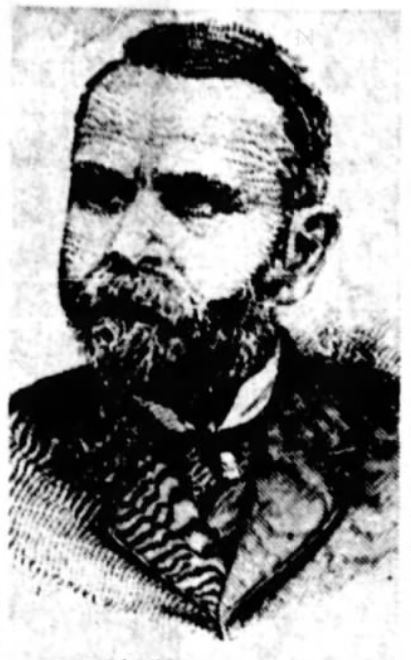
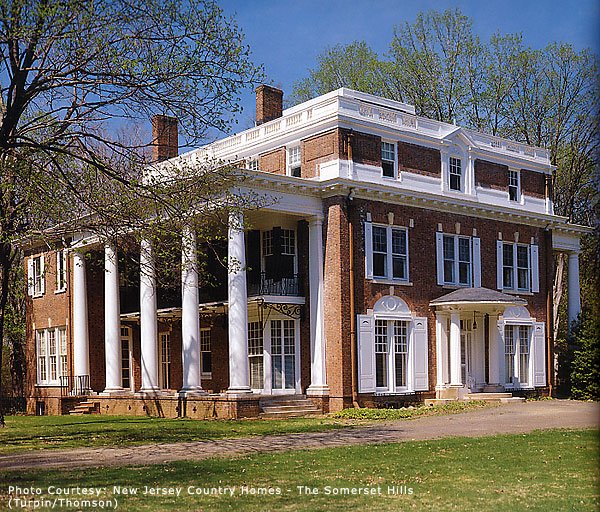
Seney was also instrumental in the creation of the Somerset Hills County Club, the relocated Essex Hunt Club, and the Somerset Hills Bridal Path Association. George was a founding member of St. Bernard’s Church. In 1880, Seney donated land and a frame church to the Methodist Church, a gift valued at $10,000, located a short distance east of the intersection, at the intersection of Church and Wesley. The church was dedicated on June 27, 1880. Many don’t know he also built and donated the Seney Hospital in Brooklyn, now known as New York-Presbyterian Brooklyn Methodist Hospital in Park Slope.
Side Note
Seney’s bank was a financial backer of the Detroit, Mackinac and Marquette Railroad, a developer of real estate in the Upper Peninsula of the U.S. state of Michigan, and the railroad named one of its depots after the New Yorker. The depot became the logging town and resort village of Seney, Michigan, and the regional name gave birth to the Seney National Wildlife Refuge.
The Metropolitan Bank failed and went bankrupt in 1884. This permanently shadowed the remainder of Seney’s life and career. He was forced to sell most of his art collection in auctions held in 1885 and 1891, but that didn’t stop him from his dream of building one of the grandest mountain hotels in the tri-state area.
The Grand Somerset Inn
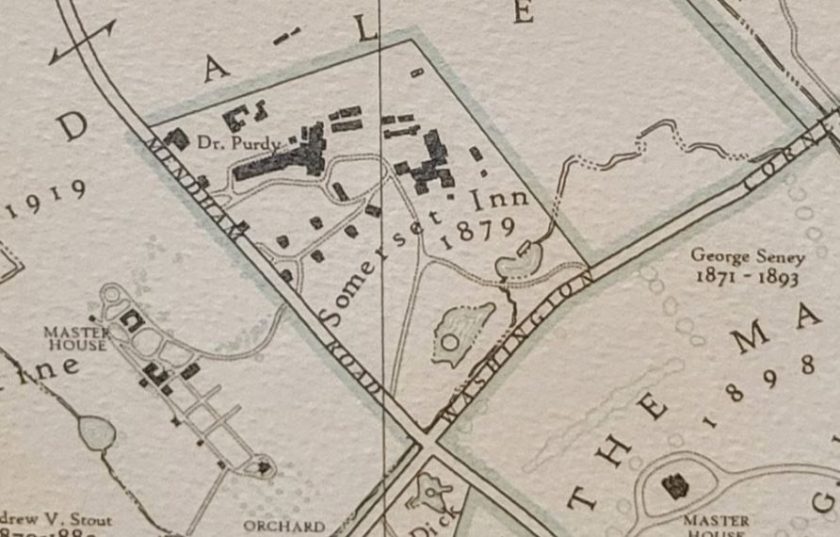
Starting in the 1870s, visits to the Somerset Hills were on the rise. With the railroad reaching Bernardsville in 1870 and extending to Far Hills, Peapack and Gladstone in 1890, the catalyst was in place to bring the masses…. and it did. Essex County had gotten too crowded so many flocked to Morristown and the surrounding area including the Somerset Hills. The Old Stone Hotel, the Bernards Inn, and the Claremont Hotel were opened, but nothing would match the exclusive Somerset Inn on the Mountain.
The famed Somerset Inn on Bernardsville Mountain, named by George Seney, served more like the unofficial tourist bureau for New Jersey as the wealthy came to Bernardsville for a look and felt it was the perfect spot without having to travel to Newport or the Hamptons. With plenty of space for riding, it quickly became a favorite as a natural fit for equestrian activities with ties to the Essex Hunt Club, which had recently been purchased by Charles Pfizer and relocated adjacent to the Inn. It was noted as being one of the best-equipped mountain hotels in the New York region.
Every week during the open season there would be a weekly column in the Bernardsville News highlighting the social fare and prominent guest list at the inn.
Photo Gallery – Click any image to start the slideshow.
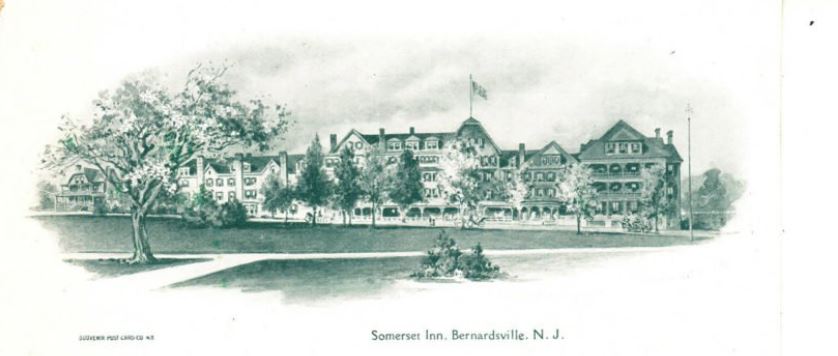
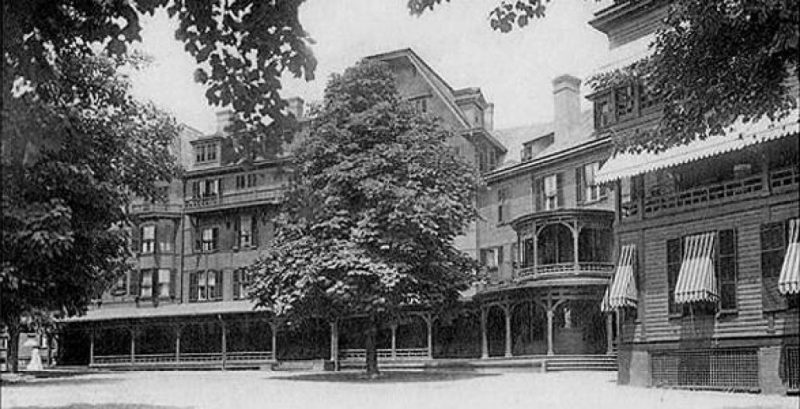
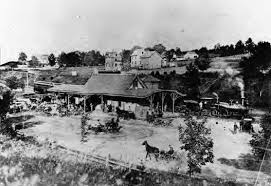
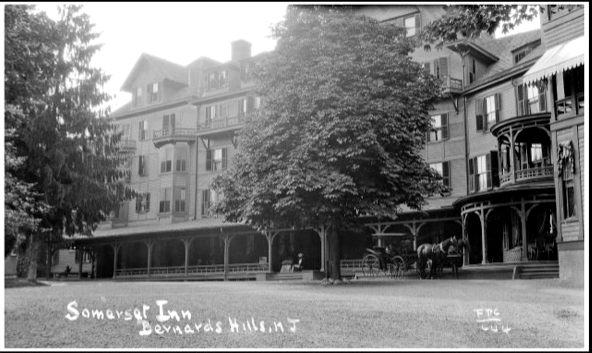
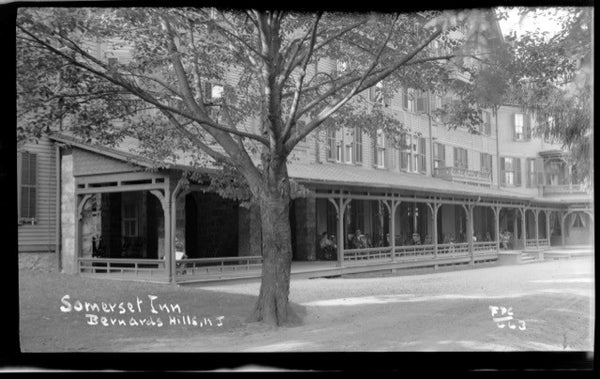
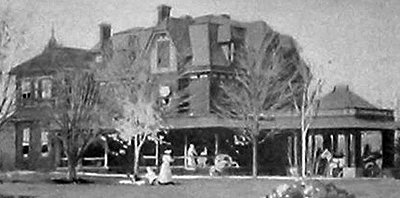
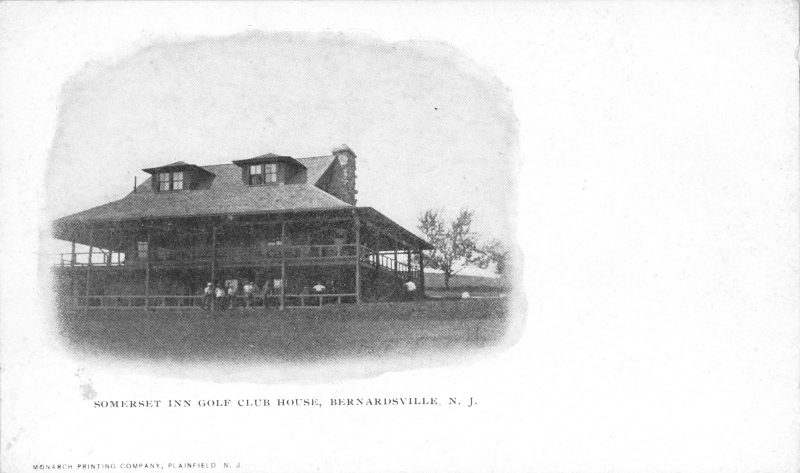
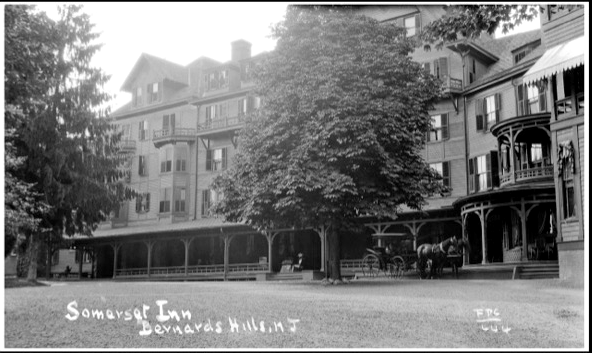
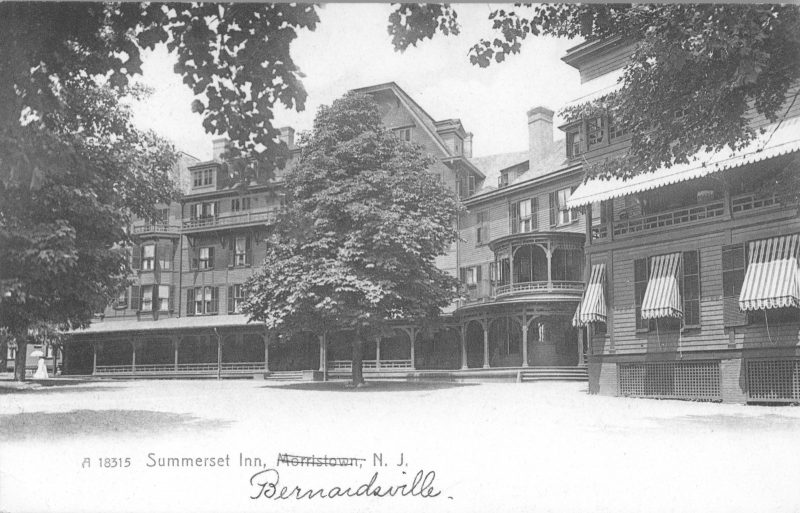
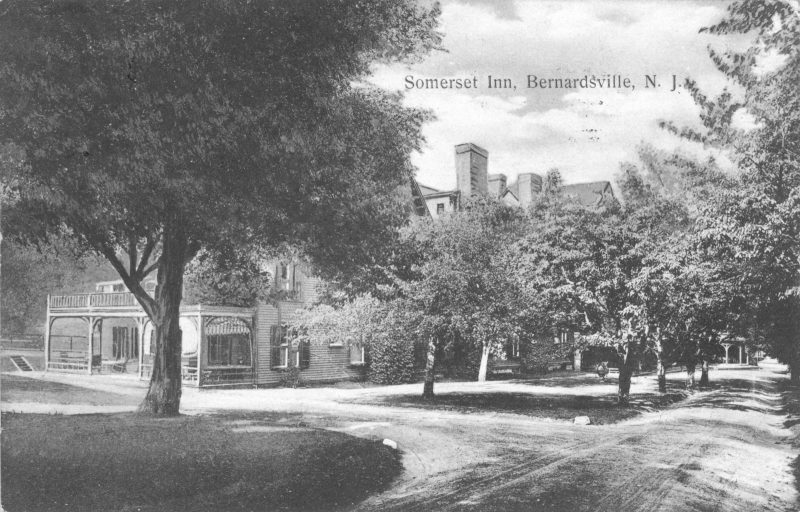
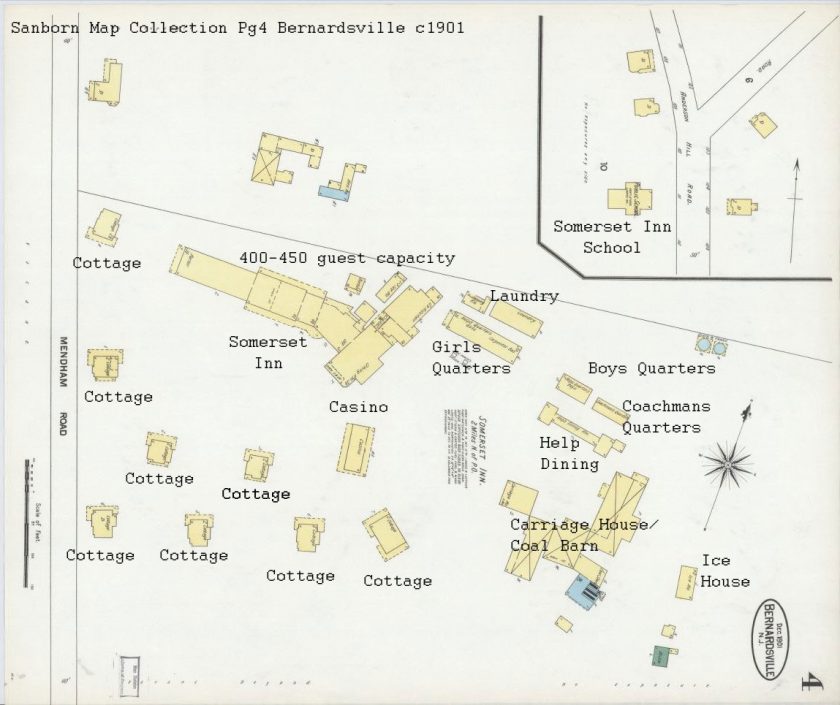
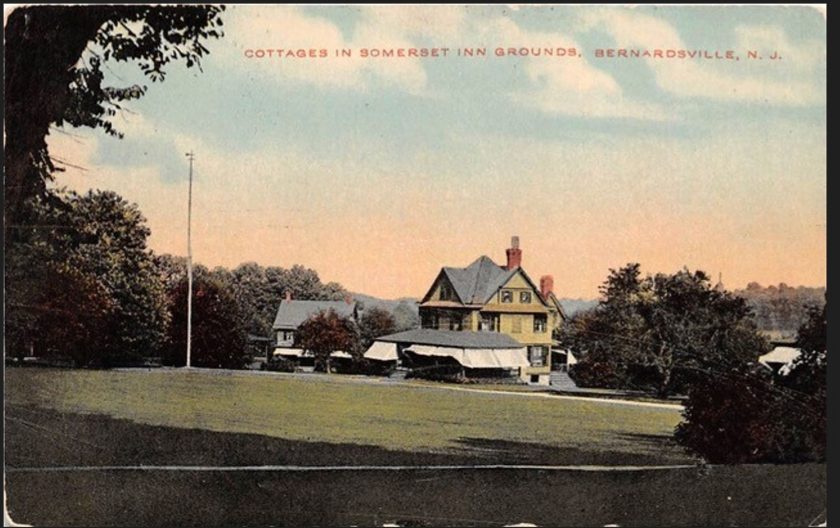

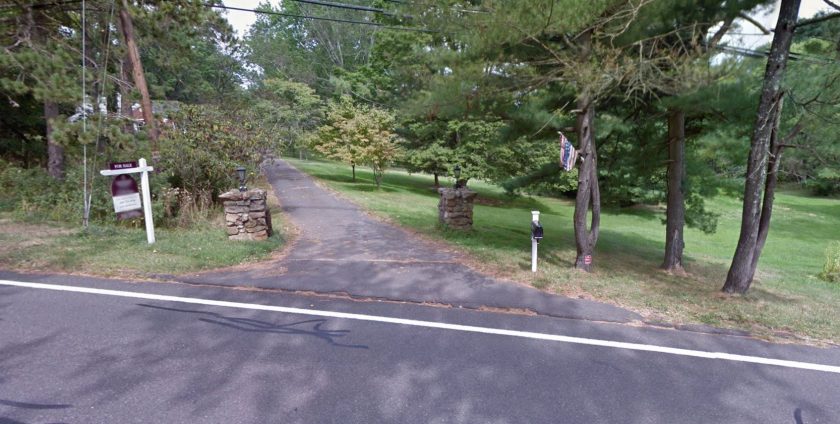
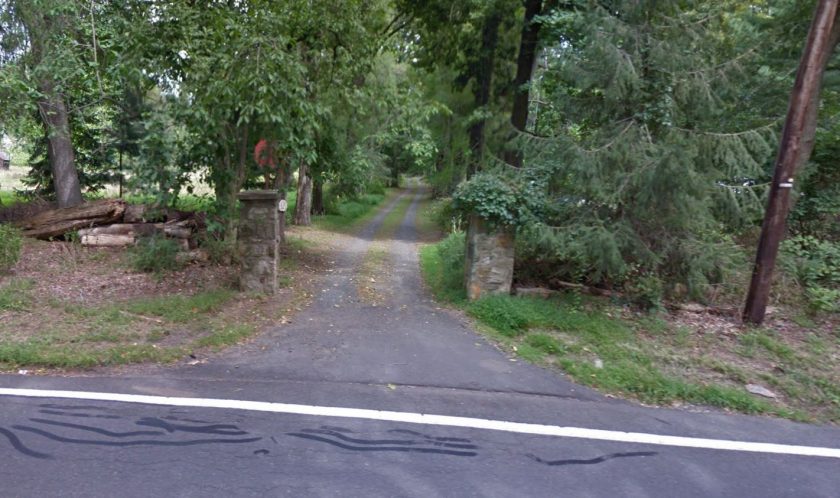
The main part of the Inn was five stories tall, faced in a southerly direction at its center, and provided grand views at one of the highest elevations on the mountain. (800 feet above sea level). The Inn could accommodate up to 500 guests. It was noted also that there were “no marshy swamps, so there weren’t mosquitos.” Warmed by steam, equipped with elevators, and lighted by gas, It was said that even Thomas Edison visited the Inn as a guest. Edison was a Llewellyn Park resident, and many of the wealthy were tired of intrusive development, which was why the Essex Hunt Club was sold off and relocated first to some of Seney’s properties.
The hotel amenities were some of the best anywhere: a grand ballroom, dining halls, parlors, billiards, cafe, barber shop, newsstand, outdoor concrete swimming pool, tennis courts, equestrian activities, fox hunting, golf course (Somerset Hills Country Club), walking paths, gardens, post office, and a telegraph office. Large vegetable gardens off Washington Road were used as a “farm to table” and the kitchen chefs used freshly grown vegetables.
Seney passed away on April 11, 1893, from angina pectoris (heart disease) in New York City, leaving his holdings to his son Robert Seney, who later became partners with Grant and Evander Schley of Bedminster/Far Hills. Eight large “cottages” and a Casino were added to the Inn grounds, each with about seven to twelve rooms. Evander reopened the Inn in 1896 and continued expanding it along with additional amenities.
Charles Pfizer’s Visit Changes the Hills
In 1890, Charles Pfizer , son of the co-founder of the Pfizer company acquired Montclair’s Essex Hunt Club relocating it first to his friend George Seney’s estate in Bernardsville. Pfizer first visited the area as Seney’s guest at the Somerset Inn. Pfizer would later purchase the home while he looked for a new place to relocate the Hunt Club in the area. The Pfizer Company would also acquire a large tract of land in nearby Gladstone and become one of the largest employers in the area.
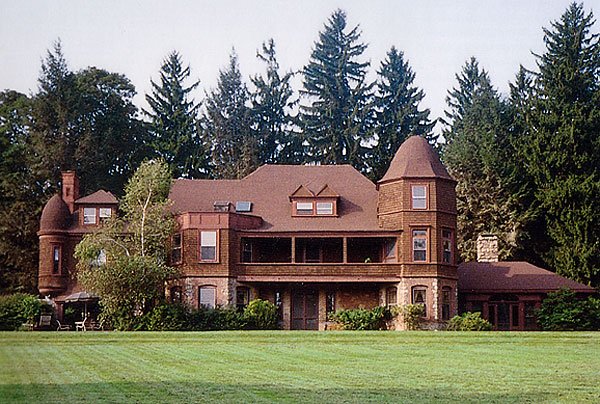
Essex Hunt Club and George Seney’s Help
In 1892, Pfizer relocated the Hounds Pack to George Seney’s property, while Pfizer Jr. began looking for appropriate permanent accommodations. The Seney estate, known later as The Maples (named Maples by owner Francis Loyd in 1898). then noted as the Bernardsville section of Bernards Twp. The Maples, later owned by Francis Loyd (Brooks Brothers President) was demolished in 2004. Francis Loyd was an experienced Scottish Terrier breeder who was kept on a 50-acre property called Walescott Kennels in Morristown.
After the Maples, Charles Pfizer relocates the Essex Hunt kennels and stables adjacent to Pfizer’s next home – Yademos, the former estate of George’s son Robert, boarding the hounds in what was then home to Walescott Kennels. Pfizer would finally locate the kennels in nearby Peapack, which is still the home of the Essex Hunt Club today.
The 1908 Destructive Fire
On May 6, 1908, at about 1:30 am, a fire of unknown origin took the Somerset Inn right down to 20 chimneys and little else. It was just weeks before the June 1st season opening. It had been said that the “Watchman” wasn’t on post and was down in the village when the fire broke out. The fire was said to have been seen for miles as it was near the top of the Bernardsville mountain. In one instance, the place that built what is referred to as “the mountain colony” was gone. It was never replaced, and the land was eventually sold in parcels.

What Happened to the Property
Another story for another day. But here are a few tidbits of what happened to the 850+ acres after the fall of the Somerset Inn:
The old Somerset Inn property has been purchased by Assemblyman Ogden H. Hammond and will be transformed into a colony of homes with small acreages. The principal hotel buildings were destroyed by fire some years ago. Since which time a number of cottages connected therewith have been untenanted. One of these has been torn down and those remaining are being repaired and equipped with plumbing, etc.. Colonel Anthony R. Kuser sold the property to Assemblyman Hammond.
Improving Somerset Inn Property – Bernardsville News -Nov 30-1916
A design has been made for a shelter near the site of the old Somerset Inn for pupils while awaiting transportation and an estimate of $160 for its construction. The plans have yet to be approved by Ogden H. Hammond, on whose property it will be built. As soon after he approves it us possible, the shelter will be erected.
Somerset Inn Shelter Bernardsville News- Sep 11, 1919
Final Comments

Do you know any stories of the famed Somerset Inn? Share in the comments section below.
- Seney Drive in Bernardsville is named in George Seney’s honor.
- Somerset Inn guests have roads named after them: Lloyd Road, Pfizer Road, Olcott Road, and others.
- In 1888, Frederick Olcott purchased a 125-acre farm from George I. Seney, eventually increasing his property to nearly 500 acres, which he called Round Top Farm. That farm would later become part of the Somerset Hills Country Club golf course.
- Bernardsville Mountain was originally called Mine Mount and the Bernard[s] Hills (as Bernardsville was part of Bernards Township).
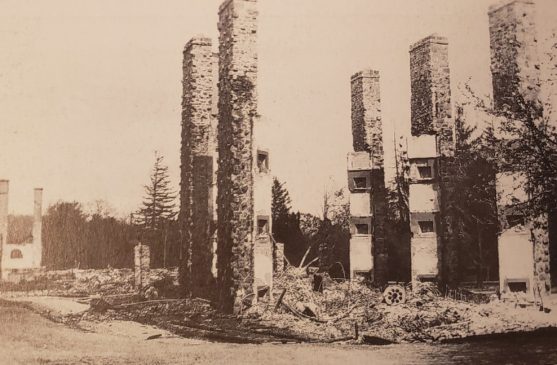

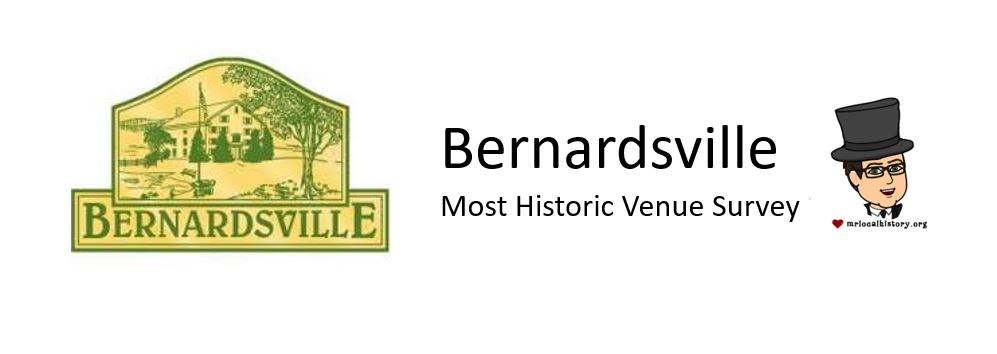

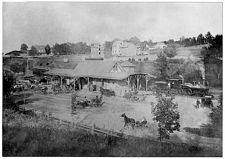
Thanks for this interesting article. I’m hoping more folks contribute documented detail to expand the topic.
Thank you, I enjoyed reading this .
I grew up in Far Hills on Pennbrook Road.
It was a beautiful place to grow up & I loved it then.